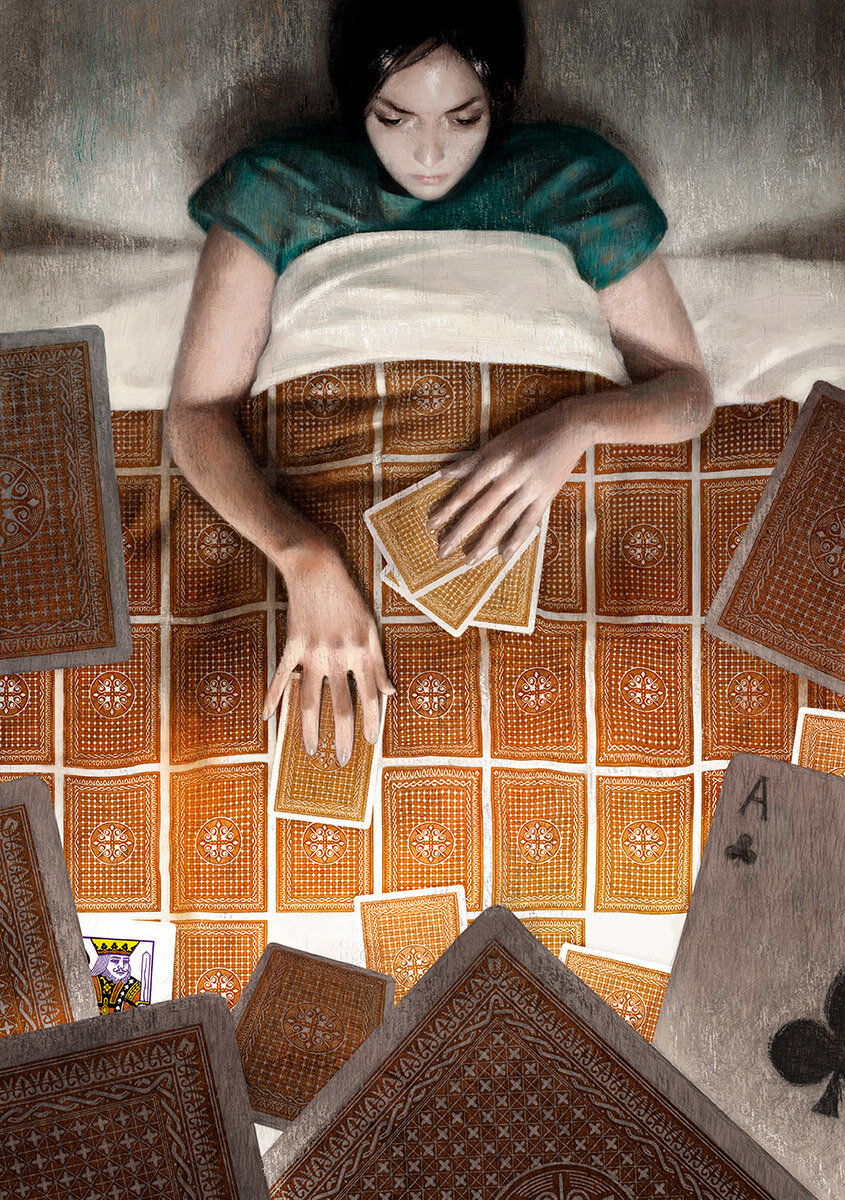BOOK ILLUSTRATIONS
Poetics of Absence
I am quite certain that Dragan Bibin intends to move on from illustration itself by expanding it to unimagined limits. Paradoxically he does so by almost synesthetically involving the spectator into the calm and isolated regions of the depicted, even when they depict someone’s face, the ravaged geography of the forehead and cheeks lined with wrinkles, withered lips and the opaque darkness of deep waters perceived in the eyes.
Thus, the punctum of a portrait of a drowned man is the point where the velvety wings and legs of a white vampiress, a nocturnal butterfly, touch the cold human skin of the drowned man; on the other painting it is the point where the fingers and palms touch the glass of a window. Those hands are outside, in the night and the dark while the bright space of happiness is inside, on the other side of the glass. The man is now a moth bewitched by light. Later there is an unexpected turn of events: a dog gazing into the dark night through a half open door from an empty bright room. It is up to the spectator to fill the night with his/her own fears and the dog is just a guide between worlds.
Dragan Bibin is a quiet and secretive master of primordial fear and an absence that arouses a shudder of dread. When the wind scatters the pauper’s bags and one of them flutters and flaps in the wind, hanging from a bare branch, fluttering like a cynical flag, a standard of shattered hopes, one can not help but ask – where their owners are, the men and women who carried them, who kept the trinkets of their lives in them.
The so-called learned will say pars pro toto and will prattle on maybe about immortality, eternal life but the answer is simple, unavoidable: They are scattered to the winds.
That is what Bibin achieves by painting just one ordinary, torn pauper’s bag. In the wind.
Milenko Bodirogic




















